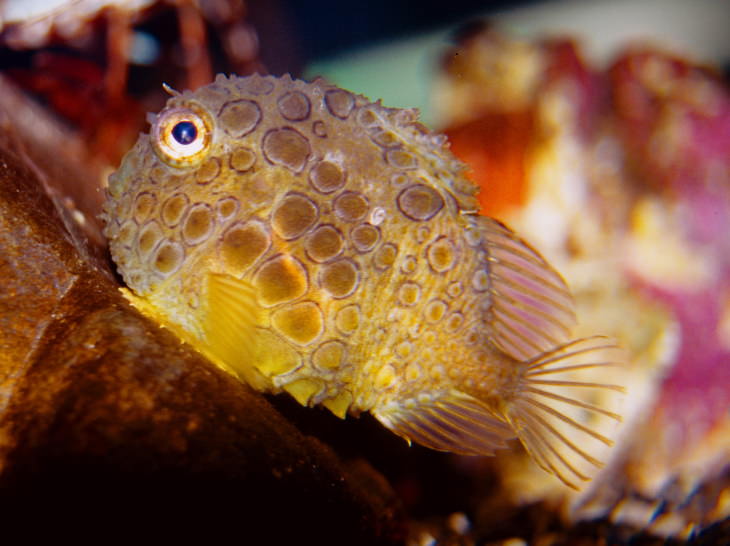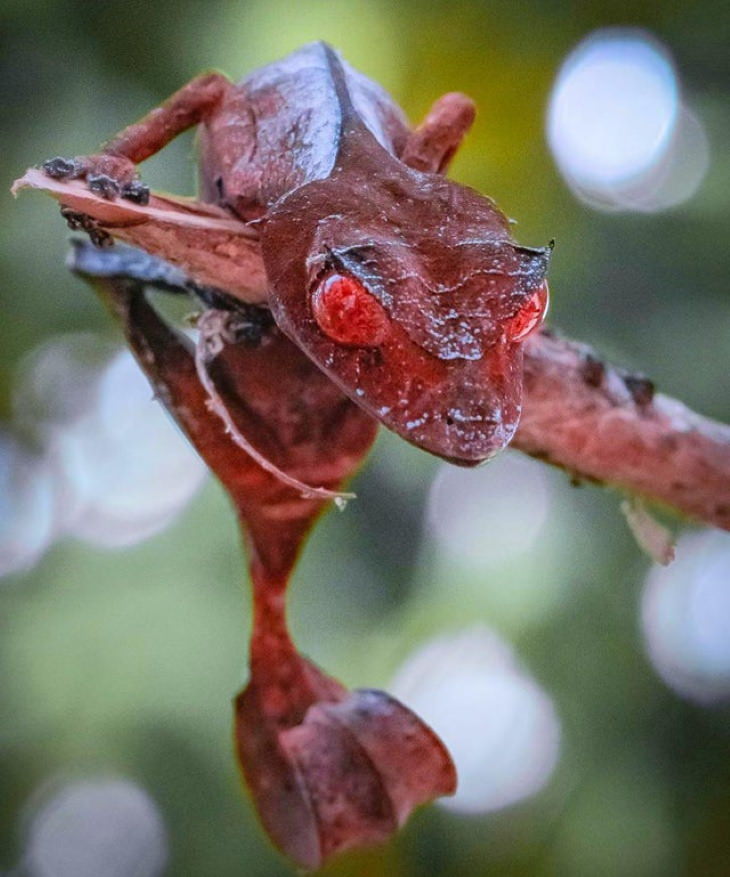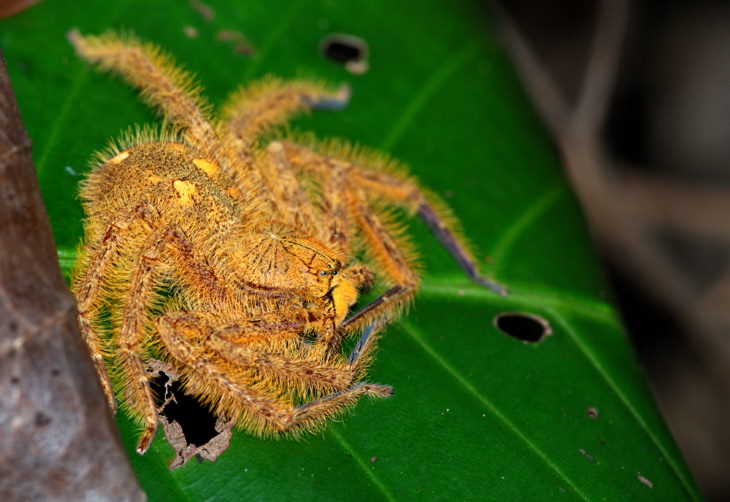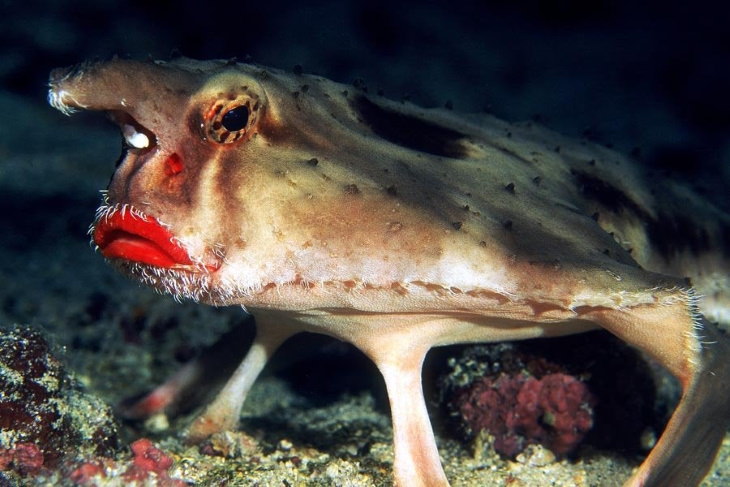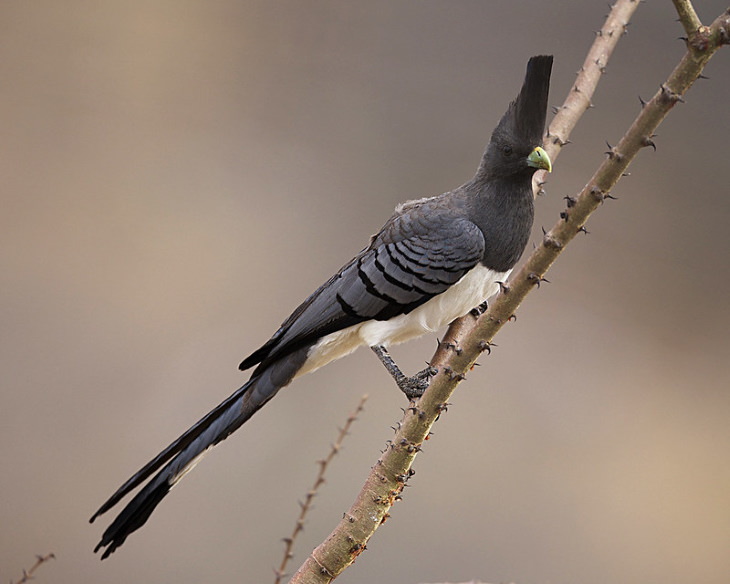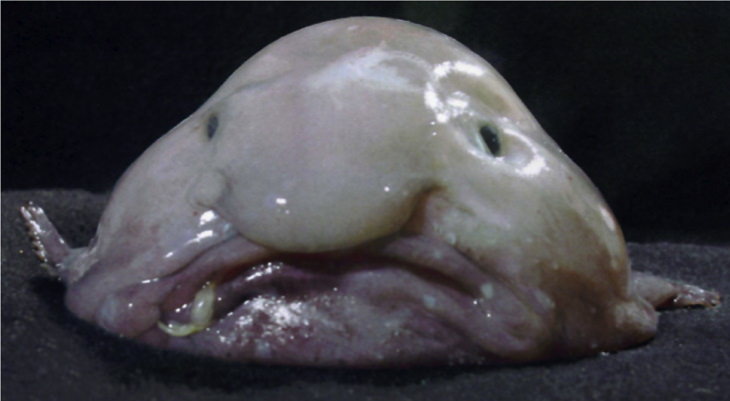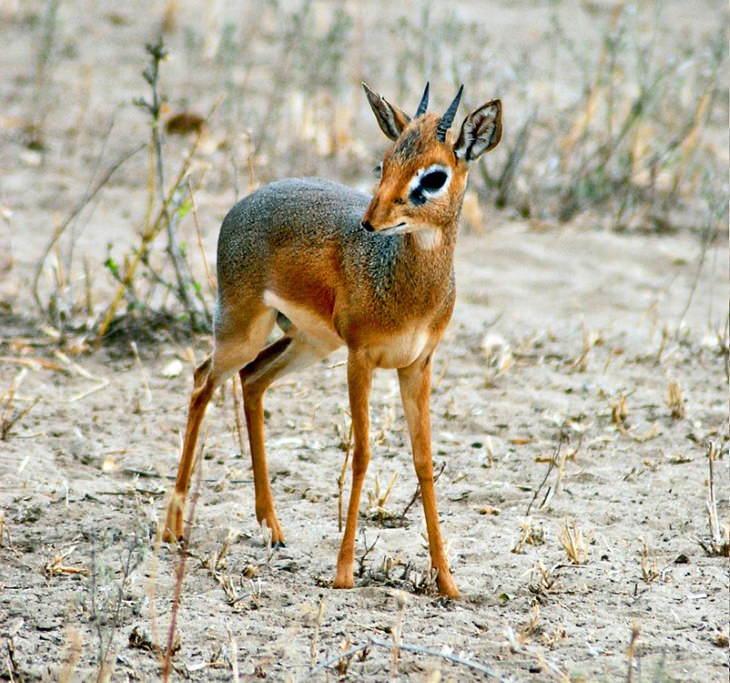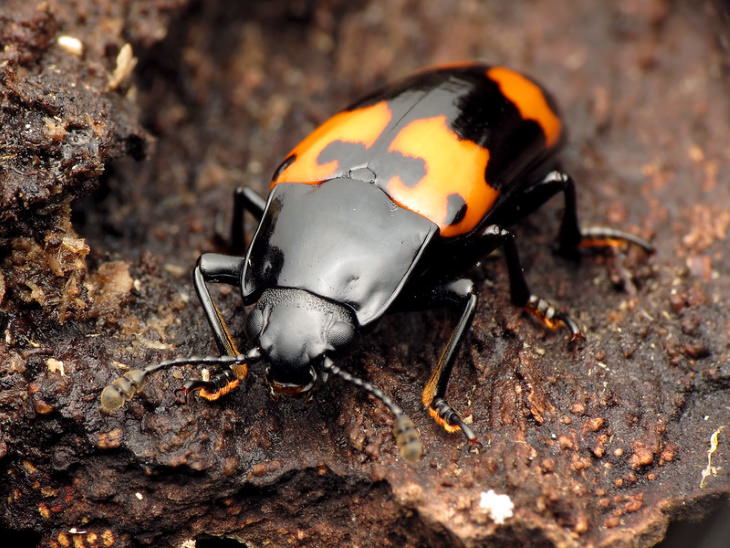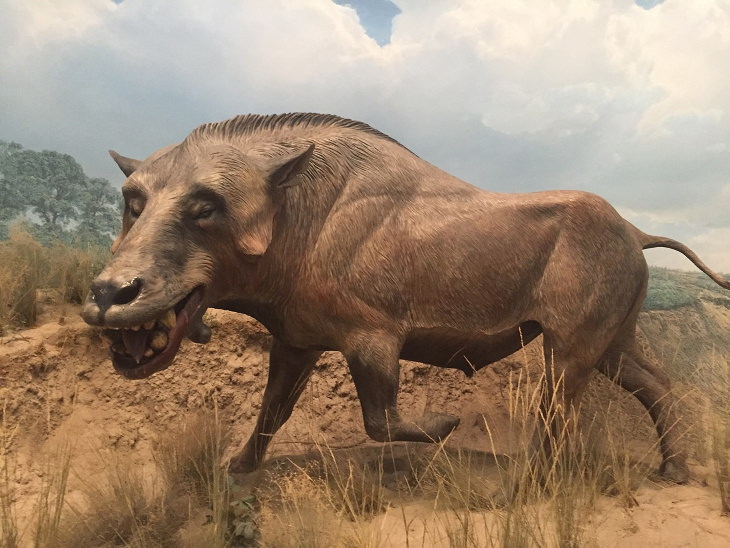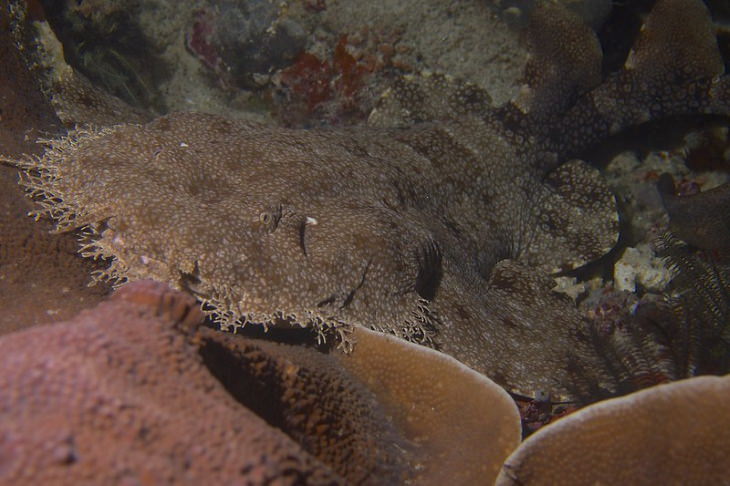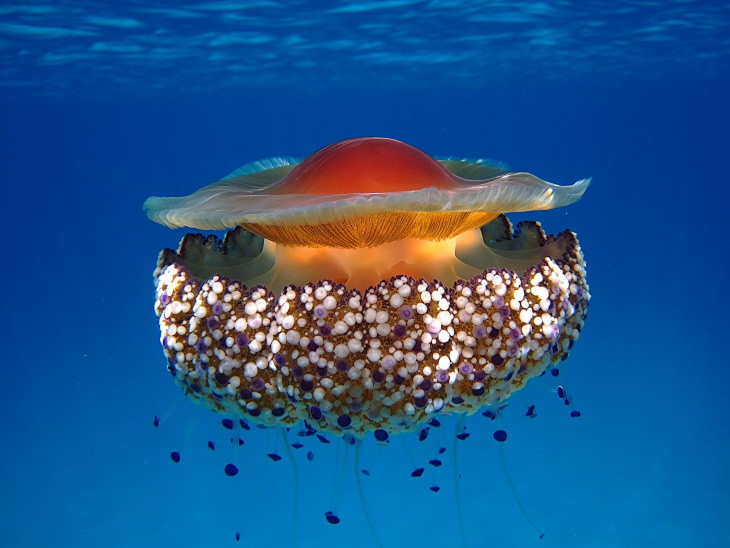1. Spiny lumpsucker (Eumicrotremus orbis)
This prickly-looking lump of a small fish may have a hilarious name, but it's oddly appropriate, as spiny lumpsuckers can attach themselves to surfaces, such as rocks or coral, with the help of rounded-looking pelvic fins modified to work as suction cups. These animals are native to the Pacific coastal waters of North America, as well as some areas in Japan.
2. Pink fairy armadillo (Chlamyphorus truncatus)
The pink fairy armadillos are the smallest species of armadillo that live in the sandy plains of Argentina. Also known as pichiciegos, these tiny mammals only grow to be 15 cm (6 in) in length and have a soft pink shell. Their small size and shell color both contributed to their adorable name.
3. Satanic leaf-tailed gecko (Uroplatus phantasticus)
Only a quick glance at the image of this miniature gecko from Madagascar certainly reveals how it earned its peculiar name. The red eyes of the rare lizard are likely responsible for the "satanic" part of the name, and some species of the animal have black scales and red eyes, which can look quite demonic. The most distinctive feature of the reptile, however, is definitely its leaf-shaped tail, which helps it blend in with the environment.
4. Heteropoda davidbowie
Davidbowies are huntsmen spiders native to Malaysia, and we're sure you'll never guess which celebrity they're named after... Peter Jäger, the biologist who named the spider said the spider resembled David Bowie's eclectic style, so he decided to name the new species in honor of the famous musician.
5. Red-lipped batfish (Ogcocephalus darwini)
This is one of those animals the name of which makes absolutely no sense until you see the animal itself, but when you do, everything becomes clear. The lower fins of the fish enable it to walk on the ocean floor while the long side fins resemble bat wings and let it swim quite fast. The vibrant red pout is, well, quite self-explanatory. Funny enough, its closest relative is the rosy-lipped batfish, and both fish live off the shore of the Galapagos Islands and Peru.
6. Tinkerbella nana
Fairy wasps are microscopic wasp species, the smallest of which belong to the Tinkerbella genus and are visible only through a microscope. These wasps live in Costa Rica and are the smallest flying arthropods on the planet, so they definitely share some common characteristics with the Peter Pan fairy.
7. White-bellied go-away-bird (Corythaixoides leucogaster)
Contrary to what their name might suggest, go-away birds are quite social and live in groups of 30 or more in eastern Africa. They get their name from their distinctive call - a gwa (or g'away), which sounds very reminiscent of the English phrase "Go-away". The white-bellied go-away bird is only one of the 3 distinctive species of birds in the family.
8. Blobfish (Psychrolutes marcidus)
This deep-sea fish lives in the deep oceanic waters near Australia and Tasmania. It was described by marine biologists as a gelatinous mass lacking muscle, and it's most well known for being the ugliest animal on the planet. Judging from its facial expression, it is clearly disappointed by the title.
9. Dik-Dik
Allegedly named after the alarm calls of females, dik-diks are small antelopes native to eastern and southern Africa.
Quite adorably, adults dik-diks are only about 50-70 cm (19.5-27.5 in) long and weigh just 3-6 kilograms (6.6-13.2 lb), just a little longer and just as heavy as an average cat. Unfortunately, the name of the miniature antelope didn't translate particularly well into English.
10. Pleasing Fungus Beetle (Erotylidae)
There are around 1,800 different species in the group of pleasing fungus beetles, all of which are known for their habit of feeding on fungi. They come in all shapes, sizes, and colors ranging from black to brown and even turquoise and purple. Some of these bugs are important pollinators, while a few others are known as pests.
11. Dinohyus Hollandi
The name of this archaic species of mammal can be roughly translated as “Holland is a terrible pig”, and it doesn't refer to the Netherlands, the country, but rather W.J. Holland, a paleontologist and former director of the Carnegie Museum in Pittsburgh. Story has it that Holland attributed many of his greatest accomplishments from his students without giving them credit and was loathed both by his students and colleagues - hence, the quite peculiar name.
12. Tasselled Wobbegong (Eucrossorhinus dasypogon)
You'll be surprised to learn that tasselled wobbegongs are a species of shark. To be more precise, they belong to the Carpet shark order - which is a mouthful by itself. These sharks are known for their ornate appearance. In fact, the word "wobbegong" comes from one of the Australian Aboriginal languages and it means "shaggy beard". These sharks live in shallow waters along the coast of Australia and New Guinea.
13. Shoebill (Balaeniceps rex)
It's difficult to say what is the most bizarre aspect of this bird - is it its name, or its appearance? Shoebills, also known as whaleheads, are birds native to the swamps in East Africa from Sudan to Zambia, and their stork-like appearance along with their enormous bills are definitely its main features. Luckily, these birds are docile and friendly to humans.
14. Fried egg jellyfish (Cotylorhiza tuberculata)
The fried egg jellyfish is a small species of jellyfish that live throughout the Mediterranean, as well as the Aegean and Adriatic seas. These jellies got their name due to their tops resembling a sunny-side-up egg quite accurately, so the name actually makes sense. These jellyfish are harmless to humans.

